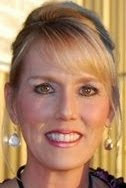
I spent six hours yesterday in my living room attending my first Discovery Education Network Virtual Conference. Despite a few audio problems, I loved listening to the lectures while being able to chat in my pj's with 300+ other educators at the same time. I'm new to Discovery Education, so this was a real eye-opener to see all of the available resources. The quote that stood out the most for me from the Closing the Global Achievement Gap presentation was "Isolation is the enemy of improvement." So, with that quote in mind, I'm posting my conference notes (and hope that some of the other 1,000+ attendees will do the same.)I overslept and missed the first keynote speech, but was able to catch the other sessions:
Turning Data Into Action: Exploring the reporting features of Discovery Education
In this session
, Matt Monjan shared his computer screen and took us through the administrative section of DE. Before this presentation, I didn't know there was an admin. section. Our district subscribes to Discovery Streaming, and as a campus technology integration specialist, I think I need administrative privileges on this site so that I better support our teachers in the use of dowloading videos, images, etc. With administrator access, you can monitor which teachers are downloading and/or streaming and at what time of day they are doing this. You can monitor which videos are the most popular downloads with your teachers, and you can export the data into Excel to sort the data if you'd like. Matt shared his DE blog,
The Bird House, which is filled with terrific resources that he said other educators were free to use.

Other topics discussed were the Discovery Educator's Network, STAR Educator applications, DEN Leadership Council applications (open until May 15), and
DEN in Second Life Sowing Seeds of Success: Projects, Ideas and Tips from STAR Discovery Educators
My favorite session was DEN Star Traci Blozosky's presentation on using GoogleEarth with Glogster, Blabberize, and DE videos & images. She shared her computer screen with us and guided us through two GoogleEarth projects she did with her 1st grade class. One was a Christmas Around the World GoogleEarth tour and the other was a study of frogs around the world. She imported videos and images from DE and Blabberize into Glogster to create her GoogleEarth placemarks. She also showed us how she uses the writing prompt generator on DE's website. Traci has a step-by-step tutorial on using Glogster on her Wiki and another good tutorial on using Blabberize. One other cool tech tool that Traci shared with us is a free comics generator for kids called Make Beliefs Comix. I can't wait to share these resources with teachers in my district!
Another DEN Star educator, Lea Anne Daughrity from Pasadena, TX, shared some neat tips on creating interactive PowerPoints for K-1 students using audio directions recorded within the PowerPoint program. She also has started a collaborative classroom project called Green 180 that I want to investigate further for ideas on getting something like this started on my campus.
Chris Lehmann: Building School 2.0
Chris Lehmann is the principal of the Science Leadership Academy in Philadelphia. He gave an inspirational keynote address on Building School 2.0. He started with MIT's slogan, "Lifelong Kindergarten." He expressed that he wanted his students to come away from their school being thoughtful, wise, passionate, and kind. The quote that stood out for me during this session was, "Technology must be like oxygen: neccessary and invisible." He said that we need to "stop talking about technology so much" and that we should get away from, "Oh, I want to do a technology project with my students." He stressed that technology should be transparent. Chris Lehmann's blog is Practical Theory and is definitely worth checking out.
Other resources I want to explore further include,
The
Cogdogroo Wiki (lots of Web 2.0 resources here)
You can register for a free tote at Think Green.
Upload slides and sync with audio at My Plick.
I posted other sites I learned about on My Delicious and my Diigo accounts.
This was a terrific experience and well worth spending six hours of my Saturday on. I can’t wait to share these resources with other educators.













